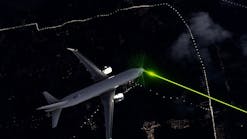Airports operations are complex, sensitive and different from all the other businesses. As the gateway to communities across the world, airports are tasked with the difficult job of providing the first impression for visitors. Regardless of the size or the type of customers an airport caters to – domestic or international – the framework of airport services, as well as its complexities and cost elements, remains the same. A business that operates around-the-clock must be resilient to cater to evolving customer demands while remaining profitable.
As reliance on air traffic continues to grow in the global economy, airports must become more adaptive, entrepreneurial and proactive. With most airports now poised as “multi-nodal” transportation hubs for people, information and trade, the challenge is to make systems and processes more digitally aware, interconnected, intelligent and simple to access for all stakeholders. In that vein, airports must tackle tasks such as predicting capacity demand, providing an enhanced passenger travel experience, improving operational efficiency, boosting staff productivity, and ensuring safety and security.
As airports race to improve their technologies, many are currently implementing isolated solutions around intelligent airports, including Airport Operations Command Centers (AOCC), mobile-enabled passenger services, introducing “smart gates” and airport performance reporting tools. While these solutions may improve specific processes and functions, they are not holistic enough. For example, the introduction of smart gates requires integration with other airport systems and analytics solutions to measure the improvements.
But without an end-to-end integrated analytics solution, it remains a logistical challenge to make data driven improvements. To circumvent these challenges, airports must evolve from piecemeal solutions to an enterprise-wide platform-based solution.
The Future of the 'Intelligent Airport'
Looking to the future, airports will become heavily reliant on platforms that are holistic, automated, agile, scalable and responsive. Airports adopting these intelligent solutions will enjoy timely access to actionable data, greatly improving accuracy in decision-making.
Airports will also be better positioned to serve the needs and wants of their stakeholders. For passengers, intelligent airports will mean the ability to easily track the status of flights, queue lengths, baggage and even discounts available at airport retailers. For airport staff, it will allow the ability to track real-time inefficiencies and congestion at crucial sites throughout the airport including gates, counters, check-in and boarding. For security, these capabilities will improve integration with immigration and citizen identity management systems while helping with biometric-based authentication of staff and passengers. For real-time security risk alerts and crisis management, an intelligent airport will also help to save lives.
5 Challenges Intelligent Airports Will Address
As airports look to become smarter, here are five key business and operational challenges that an intelligent digital platform can address.
1. Capacity Shortfalls: By 2020, the growing demand for air travel is expected to create a 15 percent deficit of the critical infrastructure needed to cater to travel, according to the Airport Council International (ACI). Airports can improve productivity and reduce operational costs through data capture, predictive analytics, and the optimization of real-time operations. The end-to-end tracking of airport resources into an operations command center allows airports to monitor and manage performance, and effectively respond to a crisis.
2. Dissatisfied Passengers: Customer intolerance is growing for poor agent interactions, baggage fees, lost baggage and flight delays. Fortunately, mobile devices and location-based information are giving customers timely notifications on airport offerings and flight delays or cancellations. At the same time, auto-tracking technology like barcodes, sensors and RFIDs, allows customers to track their baggage and look up expected wait times for security, reducing passenger stress.
3. Declining Revenues: The global ratio of aircraft-based revenue to passenger-based revenue has stagnated over the last three years. However, airports can improve passenger spend by sharing commercial promotions or special offerings delivered directly to end-user devices. Location-based data as well social and CCTV data also will allow airports to identify hot locations and trends in customer spending. Bluetooth and WI-FI access points will allow airports to locate popular areas, and in turn, identify better locations for concessions, high rental shops and self-service vending machines.
4. Increased Competition: Airports that are in close proximity to each other, compete to attract airlines and customers. Adopting a technology innovation model can help airports standout. For example, continuously updating online portals and mobile apps improves marketing and builds an airport’s brand. Integrated analytics systems across the network are helping managers analyze data to measure past performance while predicting future performance. This allows airports to identify areas for improvement and in turn, win over customers.
5. Outdated & Unreliable IT Infrastructure: Traditionally, it has been difficult to maintain the up-time of IT systems during upgrades, maintenance, and asset refurbishment etc. However, technologies like multi-channel collaboration tools and the cloud as well as sensors and predictive analytics offers workers real time insights on operational performance, enabling them to flag issues. This also allows passengers to receive timely notifications on airport events, reducing the chance of unpleasant surprises.
Technologies Enabling Airport Efficiencies
Airports that are turning “intelligent” will use multiple intersecting digital and automation technologies that must converge to address challenges holistically. These technologies help airport operators improve passenger experiences, operational efficiencies and compliance, forming the base for future growth.
For example, the airports in Las Vegas, Amsterdam and Hong Kong are using radio-frequency identification (RFID) to track baggage, resulting in improved baggage sorting and increasing the capacity of existing baggage systems. Frankfurt Airport and Hong Kong’s Chek Lap Kok International Airport have achieved improved safety, security and operations efficiency by integrating the real-time management of multiple airport systems and operations into a new AOCC.
However, even though airports globally are trying to wear the “smart” or “intelligent” look, they are adopting the technologies in a piecemeal manner. Operators must adopt a comprehensive intelligent airport-based approach for sustainability and differentiation.
Looking ahead, the industry needs to create a reference architecture for an intelligent airport enterprise that includes solution components for analytics, mobility, integration, automation and collaboration. There is also a need to establish an “Intelligent Airport Innovation Council” for continuous technology innovation. From there, the journey towards intelligence airports will truly take off.
Vasuki Upadhya is a Lead Architect with the Energy, Natural Resources, Utilities & Construction strategic business unit at Wipro Limited. He has 17+ years of experience in various Energy & Utilities areas as well as technology transformation and innovation.
Deepak Singh Rawat is an airport domain expert, associated with the Energy, Natural Resources, Utilities & Construction strategic business unit at Wipro Limited. He has 15+ years of experience across the telecom, manufacturing, retail industries of which last 5 years have been focused on airport technology, operations and transformation.





